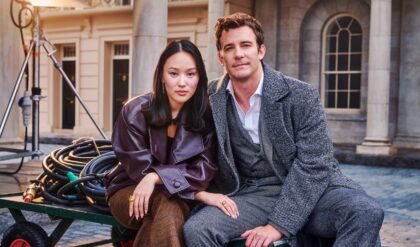
When moviegoers think of Tom Cruise, certain iconic images come to mind – and none of those images likely come from Eyes Wide Shut. In 1999, Cruise made one of the boldest film choices of his career, a choice that took him far outside the comfort zone of his mainstream Hollywood superstardom and into a world of psychological intricacy, surrealism, and sensuality.
Directed by the legendary Stanley Kubrick, Eyes Wide Shut remains a fascinating outlier in Tom Cruise’s illustrious and often blockbuster-heavy filmography. It’s a thriller full of subtle performances, mysterious ambiance, and twisted morality, both controversial and underrated in equal measure.
Tom Cruise Made One Of His Boldest Ever Movie Choices With Eyes Wide Shut
A Departure from the Usual Tom Cruise Formula










What makes Eyes Wide Shut so unique within Cruise’s body of work is just how different it feels from a “typical Tom Cruise movie.” The film is, first and foremost, a Kubrick movie. The auteur behind The Shining, 2001: A Space Odyssey and A Clockwork Orange was never one to make formula films. Stanley Kubrick’s movies were always meticulous, cerebral, and centered around unsettling explorations of human behavior, relationships, and existential themes.
Cruise trades in action-packed sequences for slow-burning tension, subtle body language, and an ever-mounting sense of psychological unease.
For Cruise, stepping into a Kubrick world meant giving up the glossy, magnetic charm that has endeared him to audiences since the early 80s. Instead, viewers get inside Bill Harford, a New York doctor whose life spirals into disarray and paranoia after his wife (played by Nicole Kidman, Cruise’s then-real-life partner) reveals a dark fantasy. Throughout the film, Cruise trades in action-packed sequences for slow-burning tension, subtle body language, and an ever-mounting sense of psychological unease.
Though his performance was significantly more understated than the smug, charming Cruise persona that audiences were used to, he delivered one of the most nuanced roles of his career. Harford is as uncomfortable as the audience, slipping deeper into the film’s hidden worlds. He leaves behind Cruise the movie star becomes someone all too human: flawed, susceptible, and very uncharacteristically vulnerable.
Released in 1999, Eyes Wide Shut was instantly surrounded by controversy, splitting audiences and critics who just didn’t know what to make of it. Of course, much of the controversy stemmed from its explicit sexual themes and unsettling atmosphere. But it wasn’t just sex and mood that set Eyes Wide Shut apart. The film wasn’t the action-heavy charisma bomb most Cruise fans expected. It also wasn’t the straightforward narrative Kubrick had previously explored in films like Full Metal Jacket or The Shining. Instead, it was a cryptic and provocative film that demanded patience and post-viewing reflection.
Critics debated endlessly over its meaning — was it about the fragility of trust in relationships? A critique of the elite and their secretive power circles? A fever dream exploring suppressed desires? As the accumulation of an impeccably insightful directing career, it’s possible it was all of those things for the 70-year-old Kubrick. Regardless, Eyes Wide Shut survived its early criticisms and is now recognized as a masterpiece. In 2022, online film hub Indie Wire even crowned Eyes Wide Shut as the best film of the 1990s.
The movie also earned itself the uneasy title of Guinness World Record holder for the longest continuous film shoot as production on Eyes Wide Shut lasted a mind-boggling 400 days. While the feat is mostly attributed to Kubrick’s infamous perfectionism, fans have to admire Cruise’s commitment to seeing the ambitious, high-stakes project through to the bitter end.
1999 Was A Great Year For Tom Cruise – That He Needs To Repeat
Fans Are Ready for More Introspective Work From Cruise After 25 Years of Blockbusters

While Eyes Wide Shut might have been divisive, no one can argue that 1999 was an essential year for Tom Cruise as an actor. That same year, he delivered a completely different yet equally compelling performance in Paul Thomas Anderson’s Magnolia.
In Magnolia, Cruise took another risky left-turn of a role as Frank T.J. Mackey, a self-help guru with an explosive presence and a deeply troubled core. Unlike the subdued tension of Dr. Harford, Frank was loud and brash with a commanding theatrical bravado shielding his emotionally raw, incredibly vulnerable character. The powerful dramatic turn even earned Tom Cruise his third (and so far, final) Academy Award nomination for acting.
Since 1999, he’s continued to solidify himself as one of the most reliable action stars in Hollywood, pulling off death-defying stunts in every Mission Impossible installment. However, that pivotal year proved there’s something immensely satisfying about seeing Tom Cruise stretch and embrace layered, character-driven roles.
With the recent news of Tom Cruise’s upcoming untitled collaboration with Alejandro González Iñárritu (Birdman, The Revenant), one can hope that Cruise may finally be ready to venture into this kind of dramatic territory again. His ability to bring emotional depth and charisma to a role has never been in doubt, but another 1999-style year of pushing boundaries as an actor could be just what the world’s biggest movie star needs as he approaches new phases of his storied post-Eyes Wide Shut career.










